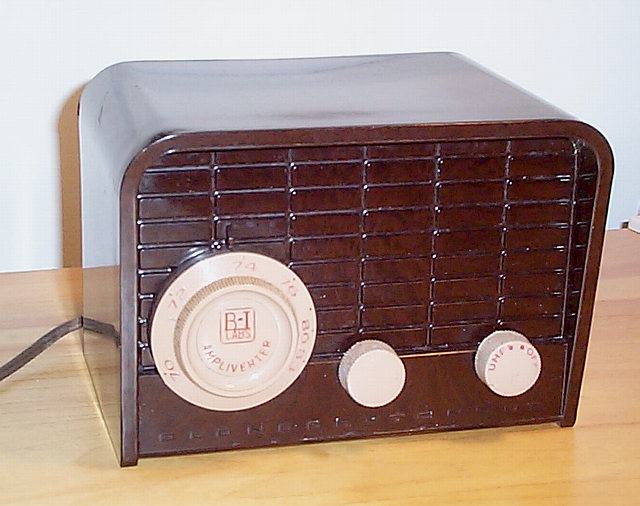Blonder-Tongue BT-70
Ampliverter


Blonder-Tongue made an awful lot of UHF converters in this bakelite cabinet. This particular model is a bit rarer, since it only covers channels 70-83, the so-called "translator channels." The circuit is the same as the BTU-2 series, with a 6AF4 oscillator, a 6AB4 IF amplifier, and a 1N62 diode mixer. The extra IF amplification was needed in translator service because of the lower power and limited range of the transmitters. A selenium rectifier provdes the high voltage DC for the tubes.
Channels 70-83 were set aside by the FCC only a few years after the UHF band was created, since full-power operation at these very high frequencies was proving difficult and expensive for the fledgling TV stations. The channels were assigned to a "translator" service -- stations (sometimes unmanned or part-time) that would re-broadcast another channel's signals into remote, sparsely-populated, or terrain-blocked areas of the country. Their function was meant to be of limited range, and temporary or for expediency, not to replace a full-service TV station. Higher-power UHF (and VHF) stations eventually eliminated the need for many translator stations, and the rise of cellular phones caused the FCC to move the remaining translator stations in 1982. Since then, channels 70-83 have been "land mobile" radio rather than TV frequencies.
Updated November 25, 2003